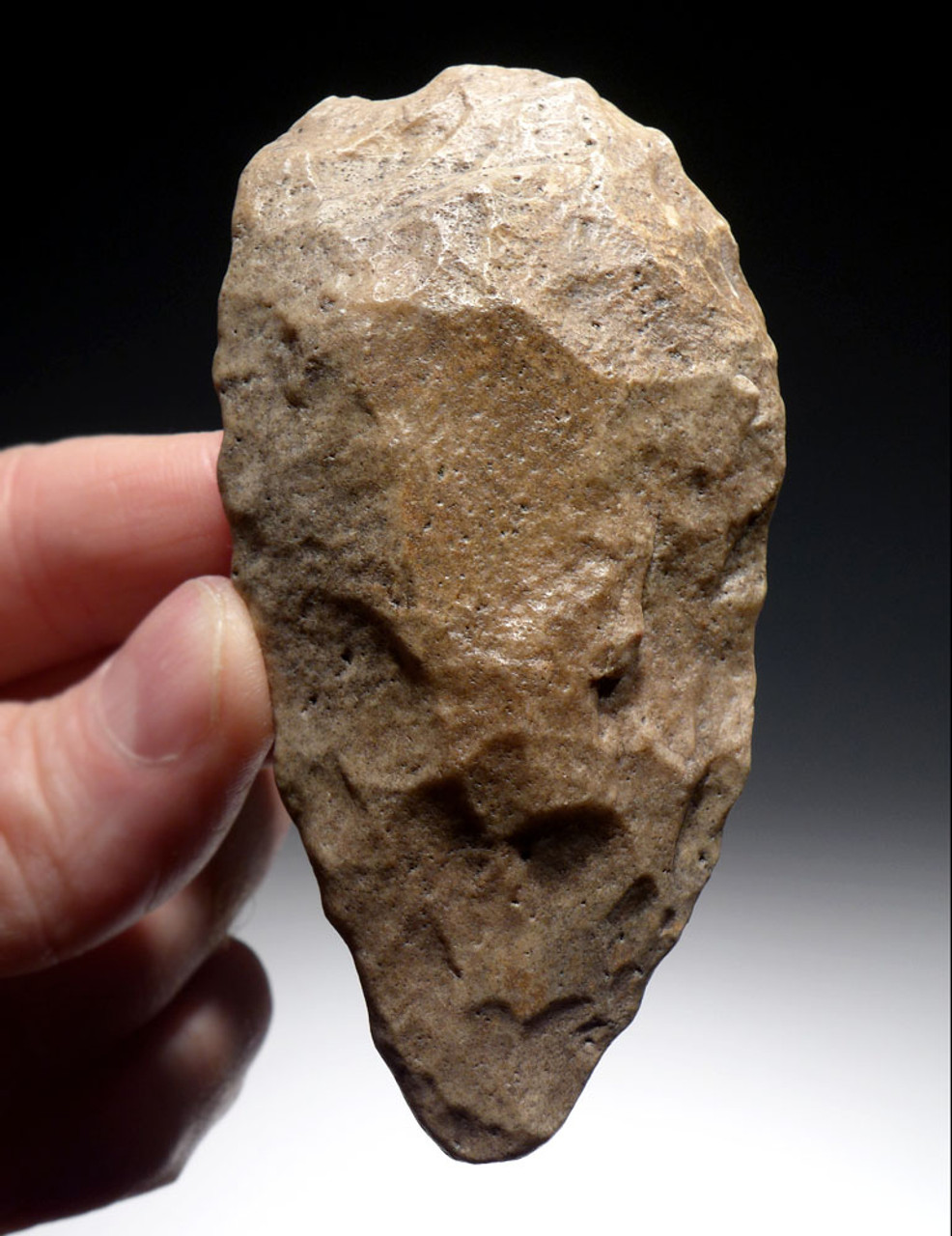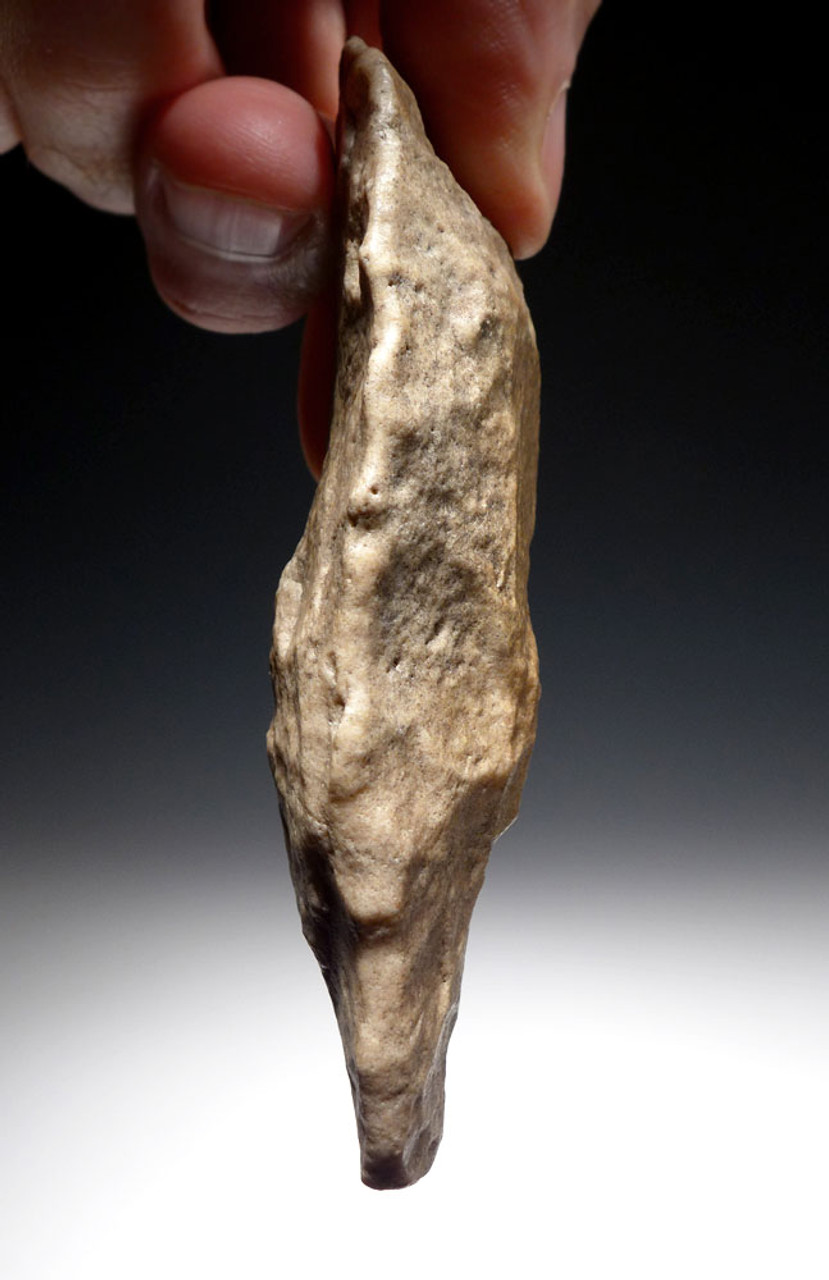Product Description
SEE MORE MOUSTERIAN MIDDLE PALEOLITHIC TOOLS
This is a masterfully executed Mousterian Tradition hand axe of the finest possible quality and condition. Made from quartzite, it shows impeccable secondary flaking to execute its refined shape and thin profile. A flake was removed from the proximal end, creating a small ledge whereby the thumb would fit when held, an indication of an advanced thought and design process. This is one of the BEST AFRICAN MOUSTERIAN hand axe we have offered and would be difficult to improve upon. The HIGHLY REFINED shape, extremely thin, sharp and unbroken tip, and secondary flaking is classic for this hand axe type. The entire surface is naturally glossy from what is known as "desert varnish" - a form of wind polishing from extreme long-term open exposure to the Saharan blowing sands. The workmanship is truly spectacular and the original thin chopping end is still EXACTLY AS MADE IN ORIGINAL UNDAMAGED CONDITION.
HISTORY
This Middle Paleolithic stone tool was fashioned in the Mousterian tradition and could have been used by Neanderthals and Homo sapiens between approximately 300,000 and 30,000 years ago. It was collected from an exposed Mousterian site in the Sahara Desert of North Africa. The tool tradition of the Neanderthals is called the Mousterian Tradition. The Mousterian Tool Culture is found in one of the longest and most spectacular sequences in the whole of North Africa. Several open and cave sites are documented. Oddly, the North African Mousterian technology appears as fully developed unlike the gradual formative stages found in Europe. Neanderthal genome mapping has shown that numerous regions across North Africa had evidence of Neanderthal human populations whereas, Sub-Saharan Africa was devoid of Neanderthals.
 US DOLLAR
US DOLLAR
 EURO
EURO
 AUSTRALIAN DOLLAR
AUSTRALIAN DOLLAR
 CANADIAN DOLLAR
CANADIAN DOLLAR
 POUND STERLING
POUND STERLING


















